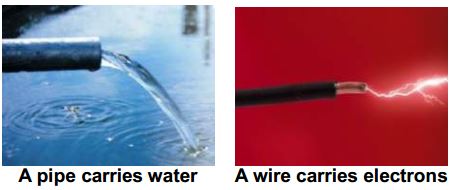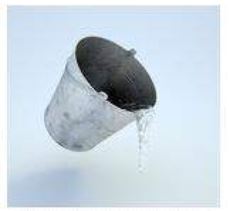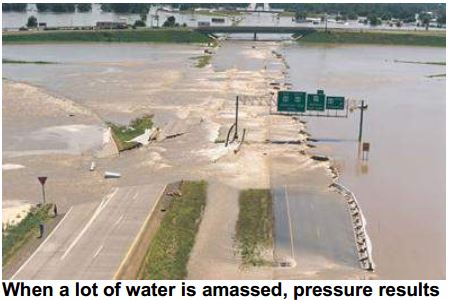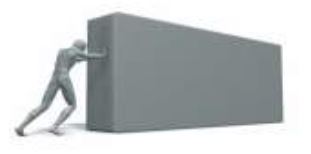How Wires Work Part 1 – Water in the Bucket

[November 2011] While every broadcast facility is different, there are some common building blocks. Wire is one of them. It all seems so simple: wire carries audio or data or control from one place to another. But there is more to wire, as Curt Flick explains.
Recently I did a job where, as always, I try to keep the local engineer as happy as possible.
Unfortunately, it became clear pretty quickly that our individual work practices would not really “jell.” Although it never occurred to me that there are real live members of the Flat Earth Society – for whom apparently any technology subsequent to about 1940 cannot work or is flat wrong – it was like I had ended up at the FES headquarters.
A Balanced View?
Among our major disagreements was his over-whelming and non-negotiable opinion that any wire having a shield was balanced, and any pair without a shield was unbalanced.
Apparently to his way of thinking, all coax is balanced, and shielded CAT wire is balanced, but unshielded CAT-5 or CAT6 must be unbalanced, simply because it has no shield. Further-more, his flavor of balanced meant the whole circuit was balanced regardless of source or termination.
As you might expect, this led to some interesting realizations on my part. My frustrations on that job – dealing with folks who never really understood some of the basics of electronics – are what led to this article. I would like to discuss with you how a wire really works, but without turning things into a Ph.D. course in quantum mechanics.
A common way to teach electronic basics is to suggest that wire works mostly with concepts akin to plumbing and water, which are nice and visual, but not entirely applicable to electronics and the transferring of a signal from somewhere out in the ether to hither and yon. However, we can use a pipe analogy for some of the principles.
Like a Pipe
First of all, water is matter and has mass. It follows very strict physical laws. So do electrons, in their adherence to the physics of particle mechanics.
To get water from one place to another, you need a pipe. To get electrons from one place to another, you need to use wire.

Technically speaking, an electron is not matter like water, but is understood by quantum mechanics to have mass. Furthermore, the Pauli Exclusion Principle prevents any two electrons from occupying the same space at the same time.
Of course, it is not necessary for us to become physicists to understand the basics of a wire. While it should be understood that the water analogy only can go so far in explaining electrical energy flow, that will be sufficient for this article. So, we may “wander” back and forth from water to electronics a bit from time to time.
So we can illustrate using something a little more visual than a quantity of charge, for much of the rest of our discussion, we will treat electrons as though they were tiny little physical balls – particles – of negative electrical charges. In order to understand what is happening, we will need to define a few things, such as Voltage, Current, what “balanced” really means, and what can affect them.
Voltage is defined as the electromotive force (EMF), the electrical “pressure” that is akin to water pressure – the thing which makes it possible for a current to flow.
Going With The Flow
For example, we learn that water pressure causes flow. From that we may assume that Voltage causes current. This is partly true because, at some point, we can pick up a bucket and pour it out, learning that there can be flow without first applying pressure (at least that is so where Gravity is a sort of “behind-the-scenes” pressure source.)

However from the pipe, we learn that flow can cause pressure. Not that water has pressure in of itself. But when channeled in a river, pressure results. Nor does water define itself in terms of quantity, assuming there is a supply source.
The same essentially pertains to electricity as well. In of itself, there is no pressure. But when the electrons are all channeled into a wire, pressure results, we call it Voltage.
To get more water through a pipe, you need to increase the input pressure – or increase the size of the pipe, reducing the resistance to the water flow. In an extreme case, with too much supply, bad things happen.

And that is our introduction to the concept of Resistance.
Resistance is Futile
In order to fully understand how wires work, we need to couple the concept of flow or Voltage with some other concepts: resistance and power transfer. By getting this clearly in mind, we can begin to visualize what is going on inside that wire as it goes from point A to point B.
Let us translate some of these principals into mechanics. A case in point: the concept of resistance can be grasped from trying to push something across the floor without wheels.
This sort of effort helps us to somehow grasp the idea that more pressure is more efficient, causing more movement. In the case of water and electrons, higher flows of liquids essentially overcome resistance, in nearly all cases. The equivalent in electronics is more Voltage.
If we are not real bright, we translate this to mean that higher Voltage is always more efficient. It is not until we grasp the concept of power that we learn this is not the case. If we fail to grasp the difference between power and energy, things just get rationalized – and more confusing. So, let us take a look at the relation-ship between power and energy.
Power Transfer
Often, people start talking about things like power transfer when they really mean energy transfer.
For example, we say an RF transmission line carries power to the antenna, when it does no such thing. It transfers energy. The only power in a transmission line is that lost to heating of the line itself. In fact, the heat is a clue: power does work, while energy is like water poured out of the bucket. It does not really do anything, it just moves from one place to another.
In electrical terms, a wire does not carry power. What it does is provide a guide across which energy can transfer, not too unlike a pipe through which water can flow, or through which a string of golf balls or BB’s can flow in much the same way.
This image of golf balls and BBs lead us to discuss Current, which we will do next, in Part 2.
– – –
Curt “Cowboy” Flick is a broadcast engineer, based in Akron, OH. He is experienced in areas from computers and studio inputs to tower climbing and maintenance. You can contact him at curt@spam-o-matic.com
